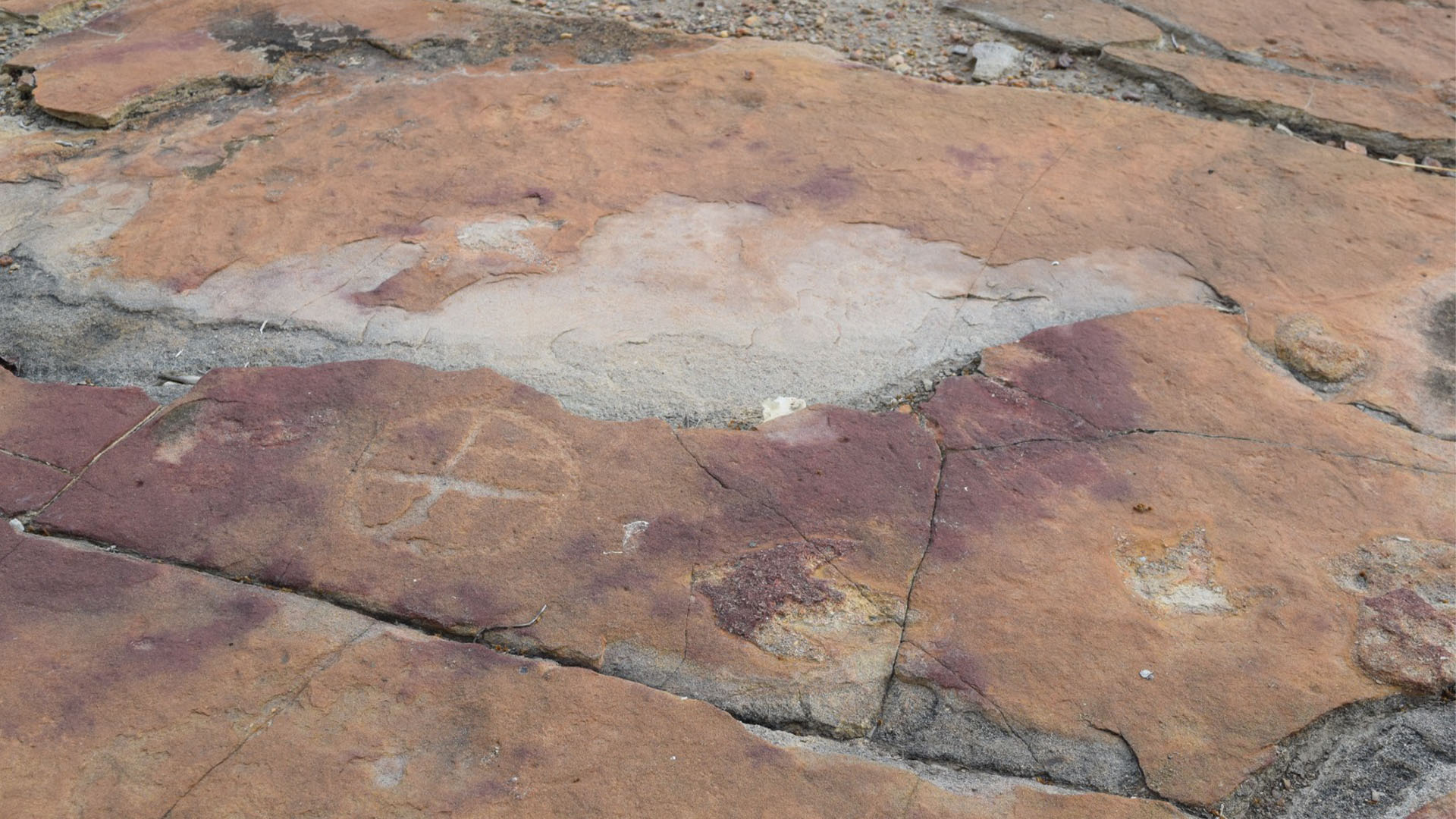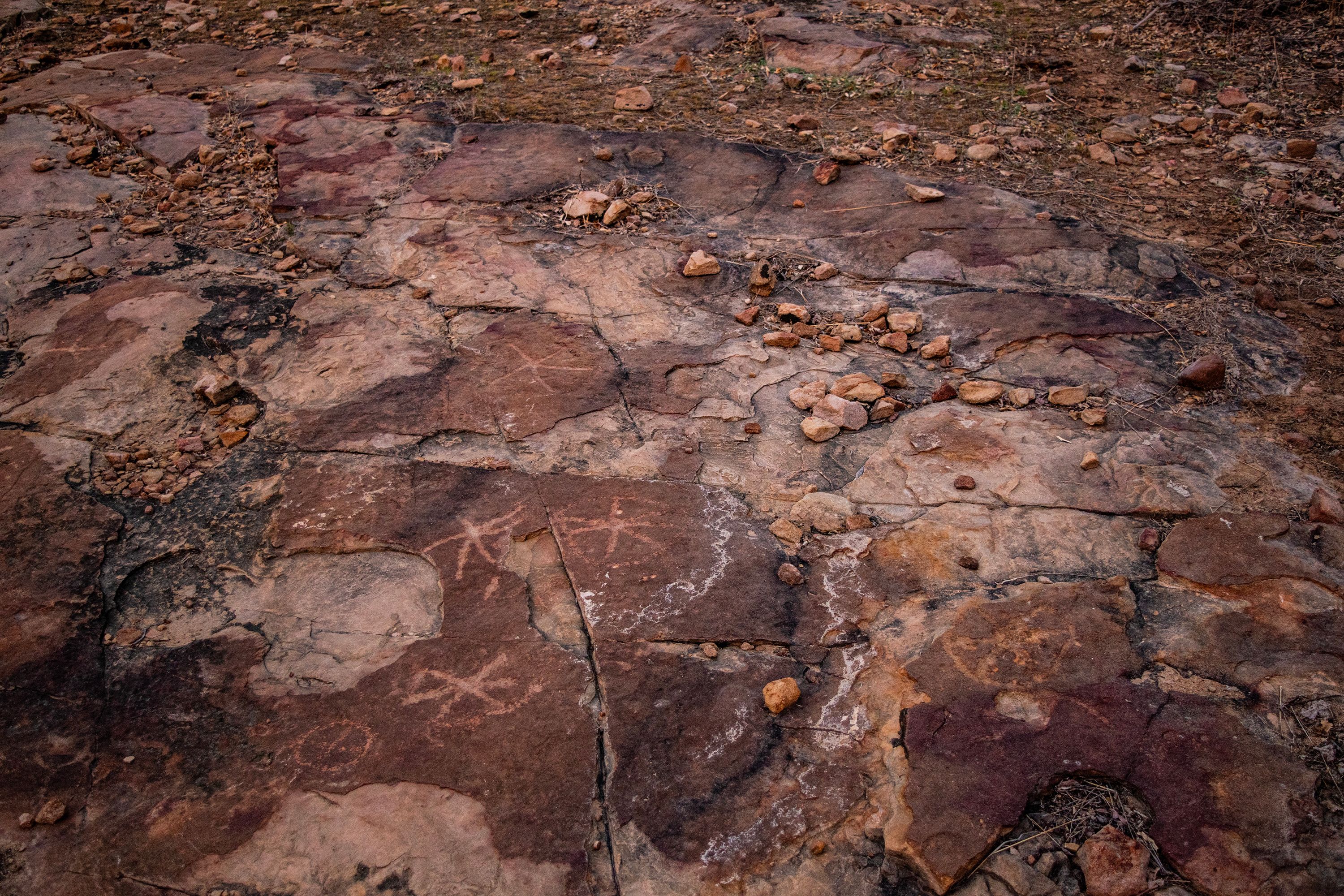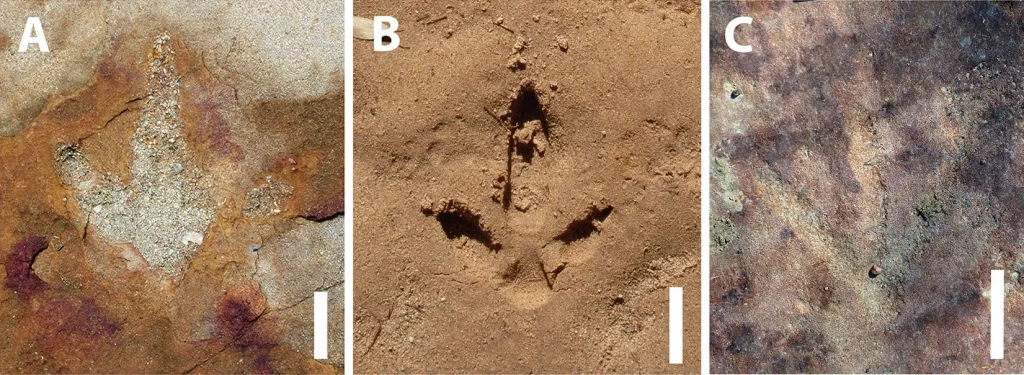In a groundbreaking study, a site in Brazil known for its dinosaur tracks has unveiled a remarkable discovery: ancient petroglyphs carved into the same rock formations as the dinosaur footprints. This convergence of paleontological and archaeological evidence is incredibly rare and promises to transform Serrote do Letreiro into a focal point for scientists interested in ancient human culture and dinosaur history.
Ancient Glyph Makers in the Valley of the Dinosaurs

Serrote do Letreiro, situated in Paraíba, northeastern Brazil, spans three rock outcrops over 160,000 square feet (15,000 square meters) and features a stunning combination of dinosaur tracks and petroglyphs. This site is part of Brazil’s Valley of the Dinosaurs, a national monument located just outside Sousa, a small municipality with a population of 70,000.
Dinosaur footprints were first identified in the Sousa Basin in the early 20th century. It wasn’t until 1975 that paleontologist Giuseppi Leonardi organized a team to confirm the existence of these tracks. During a 1979 expedition, Leonardi discovered Serrote do Letreiro. While his focus was on the dinosaur tracks, he noted the presence of petroglyphs but did not investigate them further. Subsequent researchers also overlooked these rock carvings.

The recent study, led by archaeologist and historian Leonardo Troiano from Brazil’s National Historic and Artistic Heritage Institute, aimed to address this oversight by thoroughly examining both the dinosaur footprints and the associated petroglyphs.
A Thoughtful Convergence
The petroglyphs at Serrote do Letreiro were often intentionally placed next to the dinosaur footprints, with remarkable care taken to preserve the fossilized tracks. Troiano’s team observed that none of the petroglyphs damaged the dinosaur footprints, suggesting a deliberate effort by the creators to avoid disturbing the fossils.

“Despite the profusion of identified petroglyphs, no overlap was observed between these inscriptions and the fossilized footprints,” Troiano and his colleagues reported in Scientific Reports. “In none of the cases was it found that the creation of a petroglyph resulted in damage to the existing footprints, suggesting thoughtfulness by the makers.”
The petroglyphs consist primarily of geometric shapes rather than depictions of real-life figures. Common motifs include circles with lines radiating from the center. These designs closely resemble petroglyphs found at other archaeological sites in northeastern Brazil, including nearby Paraíba and the neighboring state of Rio Grande do Norte.

The dinosaur tracks, dating back to the Early Cretaceous Period (approximately 145 to 100 million years ago), include footprints of sauropods, theropods, and iguanodontians. In contrast, the petroglyphs were created by indigenous people, specifically the Kiriri or Carri, who occupied the area between 7,400 and 600 BC. Further analysis using new direct dating methods, such as X-ray fluorescence spectrometry, may help to refine the dating of the petroglyphs.
Contemplating an Unsolvable Historical Mystery
The discovery raises intriguing questions about the motivations behind the petroglyphs’ placement. Why did the ancient glyph makers choose to carve geometric symbols so close to the dinosaur footprints?
Troiano and his team suggest that the petroglyphs’ intentional proximity to the fossilized footprints might indicate that the creators recognized and interpreted the footprints in some manner. Although the people who made the petroglyphs would not have known about dinosaurs or fossils in the way we understand them today, they might have seen the footprints as embedded animal tracks or ancient carvings.

“Observing such intentionality in the creation of the petroglyphs raises the question of recognition and interpretation of the footprints by the creators of the symbols,” Troiano noted. “The hypothesis that the makers recognized the footprints as such persists even considering that the contemporary understanding of fossils and their association with dinosaurs was likely unknown to the people who first encountered these footprints.”
The reasons behind the association of these ancient artworks with dinosaur footprints remain speculative. The glyph makers may have attributed spiritual significance to the footprints, or they might have seen the rock outcrops as an ancient art gallery to which they wished to contribute.
Regardless of their motivations, the meticulous work of the ancient glyph makers will now be examined in greater detail. Serrote do Letreiro is set to become a significant site for both archaeologists and paleontologists, offering valuable insights into both ancient human culture and dinosaur history.
Conclusion
The discovery of petroglyphs alongside dinosaur tracks at Serrote do Letreiro represents a rare and fascinating convergence of paleontology and archaeology. As researchers delve deeper into the site, it promises to reveal new dimensions of ancient human and dinosaur history, enriching our understanding of both fields. The intersection of these two forms of ancient expression underscores the profound connections between our distant past and the natural world.
